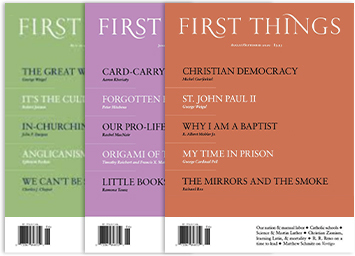Being God's Image:
Why Creation Still Matters
by carmen joy imes
intervarsity academic, 248 pages, $22.99
Don’t set your expectations by this book’s academic imprint. Being God’s Image is, as the BibleProject’s Tim Mackie rightly describes it, “accessible.” Expect lots of exclamation points, but the author’s enthusiasm is generally infectious, not nauseating. Joy is her middle name.
After cruising block by block through the first chapters of Genesis, Imes takes readers on a 30,000-foot flyover of the human experience as seen in the Bible’s wisdom literature, the person of Jesus, and the writings of Paul. Throughout the flight, Imes serves snack-sized but nutritious explorations of sexuality, race, and disability. She then lands in Revelation and takes an extended eschatological taxi, one grounded in a restored creation rather than an earth that is left behind. (Think N. T. Wright, not Tim LaHaye.)
Imes, a Biola University Old Testament professor, is best in the beginning. Ever wonder why God says “let there be light” on day one, before creating the sun and moon on day four? Imes, with a nod to Henri Blocher, has a good answer based on a “form and filling” framework, and her account of the Noah story is meaty. Later in the book, however, the personal stories expand and the biblical exegesis contracts.
Imes and Mackie are part of a wave of Gen Xers that are taking the reins of American Evangelicalism from Baby Boomers. They may stub their toes—count me not a fan of using “gay Christian” or capitalized “Black” and “White,” even when heretical ditches are otherwise avoided—but their responses to the misplaced literalism and flag-waving in which they were raised is often helpful. Just as many older Christians are cheering on a demonizing politics of personal destruction, Imes’s very apolitical reminder about the roots of human dignity is timely.
—John Murdock




